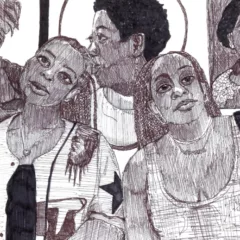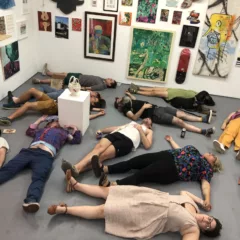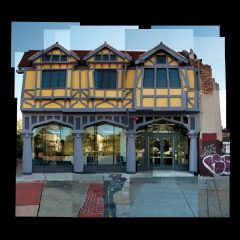Temple Bar Gallery is exhibiting Imitation of Life, the first solo exhibition in Ireland of work by American artist Amie Siegel, through April 2. Curated by Megs Morley, it consists of two 40-minute video projections arranged so viewers see the first, “Quarry” (2015), then move to the adjacent space to see “The Architects” (2014). On encountering “Quarry,” the term “finish fetish” comes to mind as Siegel’s camera, in an unending pan, surveys the aggressively unadorned surfaces of the vertical office buildings and residences for the super-rich that have been growing across Manhattan like kudzu. When the video cycles back to the beginning, it shows matching sets of unread books, of the sort that decorators purchase by the yard, sitting between stone bookends. It proceeds to apartments furnished with generic, tasteful trappings of wealth – every kitchen has refrigerated wine storage – but devoid of any individual character. At times, it becomes evident that the video has recorded photographs of interiors and architects’ models, rather than actual buildings.
People, neutralized
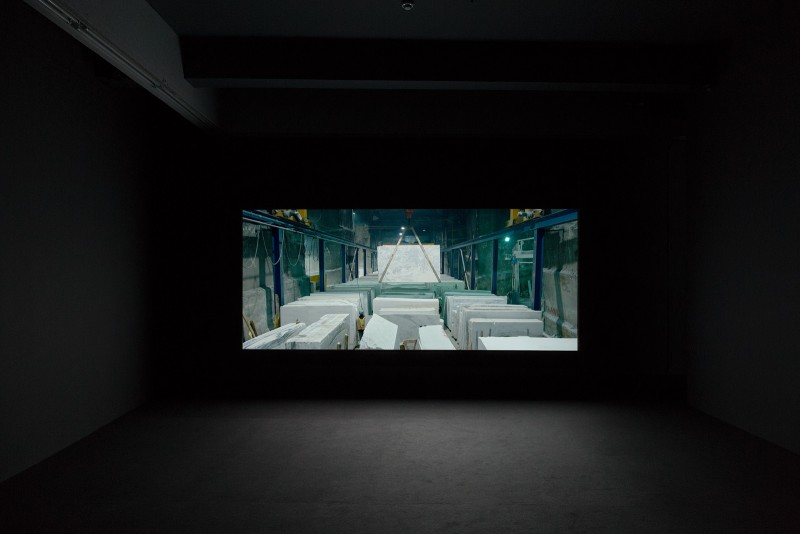
The design-sensitive will recognize furniture by Nakashima and Bertoia, high-end Italian lighting, and a single painting by Brice Marden, looking much too comfortable amidst the neutral furnishings of the nouveau [super] riche. The video cuts to a tower under construction and finally we see the irregularity that indicates a human presence, if only in the rigging of safety netting and tying of yellow plastic barriers. Then the video moves to the quarry of the title, where all the buildings’ stone is being cut from the bowels of the earth, by anonymous workers with enormous technical skill.
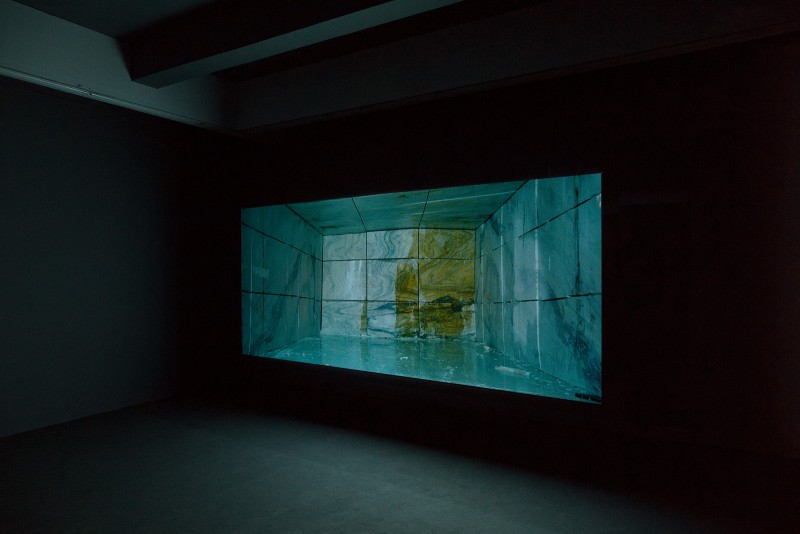
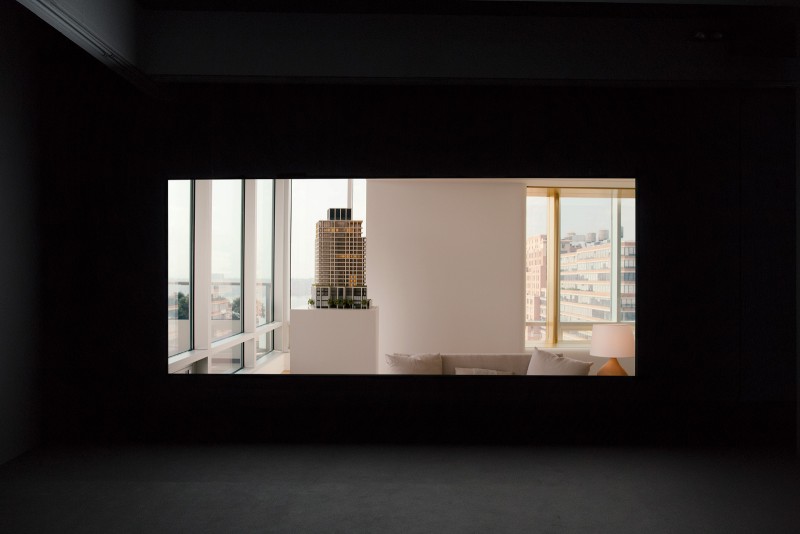
The second video pans a series of architects’ offices, but we never see the principals. This is architecture on an industrial scale, and Siegel presents 40 minutes of people neutralized, much as the buildings they design. They are the proletariat of the modern, creative workforce. Siegel’s videos pack a punch in Temple Bar, a previously derelict area just south of the Liffey that was developed as a mixed-use arts district in 1991, home to Temple Bar Gallery and Studios, the Irish Film Institute, Gallery of Photography, The Ark Childrens’ Cultural Centre, Project Art Centre, the National Photographic Archive, and others, some of which have not survived. The redevelopment initiative was spurred by the presence of small craftsmen’s and artists’ spaces – the sort that tend to congregate in marginal urban areas, but by now the gentrification has been so complete that the only artistic activity left is in state-subsidized institutions. Art once again formed the avant garde for real estate interests.
A silent weapon
Núria Güell’s exhibition at Project Art Centre, from Jan. 15 – March 19, functioned as a pop-up NGO (non-governmental organization) offering support to the 99% who wish to reclaim political and financial agency from the cabal of public and private entities that currently controls much of the world. She employed the international design vernacular of the organizations she critiqued – a glass-topped coffee table in front of a spare, white couch, with a computer monitor sited at the entrance.
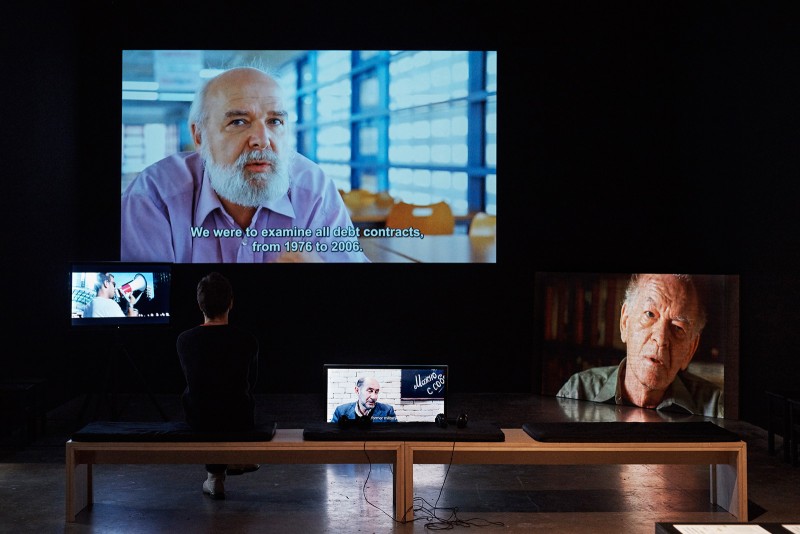
The monitor featured Güell’s “Troika Fiscal Disobedience Consultancy,” which offers help to nonprofits and grassroots cooperatives that wish to form a European network of tax disobedience, drawing on methods of tax avoidance employed by neoliberal corporations. The coffee table was covered with literature documenting historic and successful examples of civil disobedience, including the 1773 Boston Tea Party, Gandhi’s 1930 Salt March protesting the British monopoly on salt distribution, and the 1955 Montgomery bus boycott opposing racial segregation.
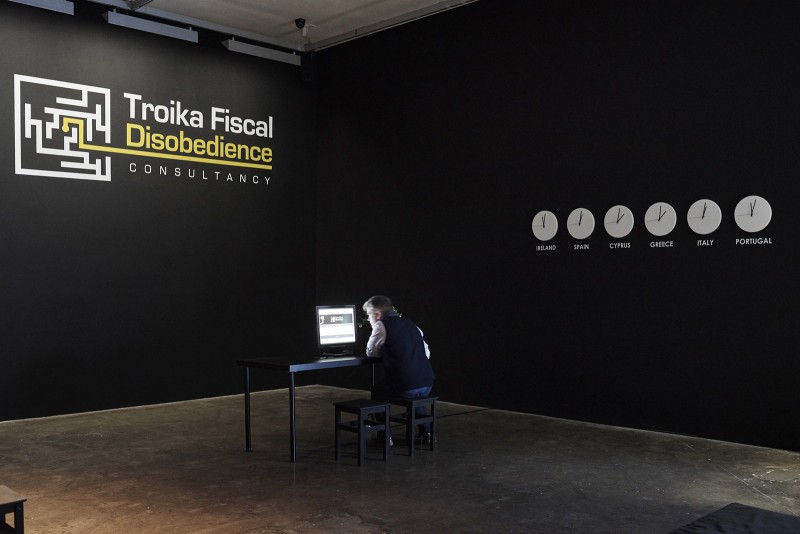
Half of the exhibition space was filled with four video projections arranged in the stylish manner of a trade fair or international exposition. The videos, assembled by Güell, were made by an international group of filmmakers, and each ran more than 80 minutes. “How to Start a Revolution” (2011, dir. Ruaridh Arrow) documents the work of American political scientist Gene Sharp, whose book From Dictatorship to Democracies been has used internationally as a field guide for non-violent political protest since its publication in1993. Sharp outlined 198 forms of protest (taunting officials, boycotting goods, mock funerals…); the video “Everyday Rebellion” (2013, dir. Arash and Arman T. Riahi) showed recent use of such tactics, including feminist groups protesting Putin, an Iranian graffiti artist, and Syrian protesters who distributed handbills via helium-filled balloons whose movement was uncontrollable by the authorities. The two other films documented the manipulation of international finance by the World Bank, International Monetary Fund, and European Central Bank, which protect narrow, private interests at the expense of the public in Argentina, Ireland, Greece, and elsewhere, who have been left with debt and fiscal austerity.
It is unclear whether Güell’s consultancy actually functions or is intended as consciousness-raising – but she made a convincing case that historically and currently, political change and power can arise from the grassroots. The exhibition was one of dozens organized around Ireland to coincide with the centenary of the Easter Uprising, the bloody rebellion which failed militarily but initiated the movement towards Irish independence. The Uprising was hardly non-violent, but a line from a speech by one of its leaders, Michael Collins, sounds like something out of Gene Sharp’s book: We have a weapon, more powerful than any in the arsenal of their British Empire. And that weapon is our refusal.


